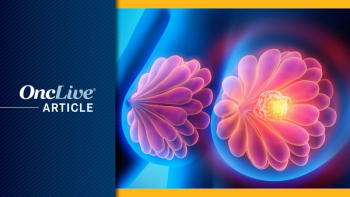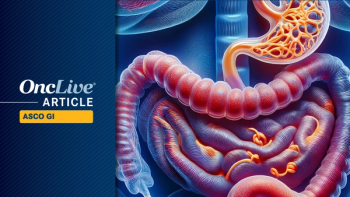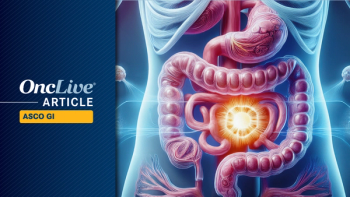
Sacituzumab Govitecan Elicits Durable Responses for Pretreated TNBC
Treatment with sacituzumab govitecan was well-tolerated and induced durable responses, some lasting longer than 1 year, for heavily pretreated patients with metastatic triple-negative breast cancer.
Linda T. Vahdat, MD
Treatment with sacituzumab govitecan (IMMU-132) was well-tolerated and induced durable responses, some lasting longer than 1 year, for heavily pretreated patients with metastatic triple-negative breast cancer (TNBC), according to findings from an ongoing phase I/II study presented at the 2016 San Antonio Breast Cancer Symposium (SABCS).
In the single-arm trial, the confirmed objective response rate (ORR) was 30% with sacituzumab govitecan, and the duration of response was 8.9 months (95% CI, 6.1-11.3). The median progression-free survival was 6.0 months (95% CI, 5.0-7.3) and the median overall survival was 16.6 months (95% CI, 11.1-20.6).
"The findings are truly outstanding," said senior study author Linda T. Vahdat, MD, MBA, from Weill Cornell Medicine and NewYork-Presbyterian Hospital. "The confirmed response rate is near 30%, and what's really striking is that this is a group of patients with a median of 5 prior regimens for breast cancer—it is a very heavily pretreated population."
Sacituzumab govitecan is an antibody-drug conjugate that consists of the active metabolite of irinotecan, SN-38, linked with a humanized IgG antibody targeted against TROP-2, a cell-surface glycoprotein that is expressed in more than 90% of TNBC. In the study, 89% of assessable patients (n = 46) had moderate (2+) to strong (3+) TROP-2 expression. In most cases, this expression was seen in ≥50% of tumor cells.
The ongoing study enrolled 69 patients with relapsed/refractory metastatic TNBC. The median age of patients was 56 years (range, 31-81). Sacituzumab govitecan was administered at 10 mg/kg on days 1 and 8 of each 28-day cycle. A median of 14 doses were administered (range, 1-67) over a median treatment duration of 5.3 months (range, 0.2-23.1).
Patients had an ECOG performance status of 0 (33%) and 1 (67%) and the primary stage at initial diagnosis was I to II (55%), III (30%), and IV (14%). Patients had received a median of 5 prior therapies (range, 1-12), most commonly taxanes (97%), cyclophosphamide (91%), anthracyclines (84%), and platinum agents (70%). The most common sites of disease at study entry were the lymph nodes (62%), lung (51%), liver (43%), chest (41%), and bone (30%).
The complete response (CR) rate with sacituzumab govitecan was 3% and the partial response (PR) rate was 28%. Additionally, 45% of patients had stable disease (SD), with 16% of the responses lasting for ≥6 months. The clinical benefit rate (CR + PR + SD ≥6 months) was 46%.
After a median follow-up of 16.6 months, 7 patients continued to receive therapy, with 6 continuing to respond at the time of the analysis. There were 3 durable responses that lasted 13 to 21 months.
"These aren't just flash in the pan type of responses, they are actually quite durable," said Vahdat. "When you have a drug that you can keep someone on in triple-negative breast cancer for almost a year you get excited, because the median survival in TNBC is a little under a year."
The most common grade ≥3 adverse events (AEs) were neutropenia (39%), with febrile neutropenia occurring in 7% of patients. Dose reductions were required for 19% of patients in the first 2 cycles, primarily related to neutropenia. Further reductions were needed for 16% of patients in later cycles of treatment. There were 3 discontinuations related to AEs (grade 3 rash/mucositis; grade 3 transient infusion reaction; grade 2 fatigue).
The most common all-grade AEs were nausea (74%), neutropenia (68%), diarrhea (59%), anemia (55%), vomiting (51%), fatigue (51%), alopecia (45%), constipation (38%), rash (28%), abdominal pain (26%), and leukopenia (25%). The most common grade ≥3 AEs, regardless of cause, were neutropenia (39%), leukopenia (16%), anemia (14%), diarrhea (13%), vomiting (10%), and hypophosphatemia (10%).
"The drug is very well tolerated, neutropenia is about 39% for grade 3/4 and there's very little diarrhea," said Vahdat. "I think the worst side effect is that patients get alopecia."
Data from the ongoing phase I/II study will be submitted to the FDA for a potential accelerated approval, according to the poster presented at SABCS. This submission would be completed under a breakthrough therapy designation received in February 2016 for the medication in TNBC following at least 2 treatments for metastatic disease. A phase III study is currently being planned under a special protocol agreement with the FDA.
Bardia A, Diamond JR, Mayer IA, et al. Sacituzumab govitecan (IMMU-132), an anti-Trop-2-SN-38 antibody-drug conjugate (ADC) for the treatment of relapsed/refractory, metastatic triple-negative breast cancer (mTNBC): Updated results. Presented at: 2016 San Antonio Breast Cancer Symposium; December 6-10, 2016; San Antonio, TX. Abstract P4-22-15.
<<<
Overall, 70% of patients treated with sacituzumab govitecan had some reduction in tumor size from baseline. There were 23 patients with tumor reduction of ≥30% (2 confirmed CRs, 19 confirmed PRs, and 2 unconfirmed PRs).

























































































